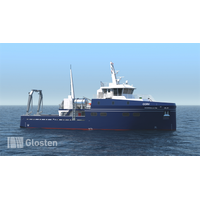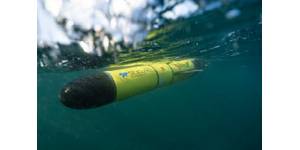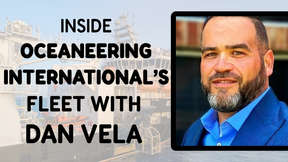
ABS to Class Scripps' New Research Vessel
with these partners in a project that has the potential to make a significant contribution to the understanding of our oceans. This project will be closely watched by the industry as it breaks new ground and demonstrates the capabilities of this promising alternative fuel at sea,” said Christopher J. Wiernicki, ABS Chairman, President and CEO
ABS Calls for New Tech in Marine Fuels
ABS Chairman, President and CEO, Christopher J. Wiernicki, mapped out the future of marine fuels, indicating that the 2050 targets will require technology beyond today’s state-of-the-art.“Technology advances of the next decade may entirely change our view of the future, but based on what we see today we can identify three developmental pathways for future fuels distinguished by the onboard technologies they require. These are: the LNG or light gas pathway, the bio/synthetic pathway and the alcohol and heavy gas pathway,” he said.“Within each of these pathways are many variables
ABS Issues RP for Hybrid Riser Systems
Riser Systems, the first set of recommended practices for hybrid riser systems in the offshore industry. “The introduction of new approaches like those being considered for hybrid risers has the potential to positively impact safety,” explained ABS Chairman, President and CEO Christopher J. Wiernicki. “At ABS, we understand how important it is to keep pace with industry advances in order to develop leading guidance that is in step with the introduction of new components and evolving technology.” Developed with industry partners for use in conjunction with
ABS Presents Guidance for Subsea Pipeline Routes
, presents a method for route determination that combines risk assessment techniques with Geographic Information System (GIS) technology. “ABS looks for opportunities to break new ground by developing safety guidance for the offshore sector,” said ABS Chairman, President and CEO Christopher J. Wiernicki. “ABS has once again worked as a trusted advisor with an industry partner to set a new standard.” Methods for surveying, data collection and interpretation, data assessment, routing techniques and risk assessment are constantly evolving. This Guidance Note uses
ABS's AIP for HHI FLNG Hull
and price-competitive FLNG hull design by adopting the latest industry standards and advanced shipbuilding practices, while maintaining high safety standards. “ABS has a history of helping the industry move forward by evaluating novel designs,” says ABS Chairman, President and CEO Christopher J. Wiernicki. “Our joint development project with HHI is another example of the trust our clients place in ABS’ technical leadership.” “In this depressed gas market, developing a price-competitive, near-shore FLNG hull with ABS could lead to providing the FLNG market
ABS Spearheads Offshore Standardization JIP
lead the standardization process to verify technical compatibility of the developed standards, conduct safety and risk assessments and provide a gap analysis report. “ABS has recognized the potential value of standardization for some time,” said ABS Chairman, President and CEO Christopher J. Wiernicki. “This JIP offers the opportunity for a group of diverse companies to create standardized procedures and basic designs that will reduce construction costs without making concessions on quality or safety.” In a first step to convene the JIP and discuss ways to

Study: Offshore Ambient Vibration Monitoring
is required. ABS has funded the two-phase study by Drs. Fridline and Shlayan with $22,209 in December 2013, and an additional $42,906 this past August. Drs. Fridline and Shlayan recently had the opportunity to meet and discuss their research with ABS Chairman and Chief Executive Officer, Christopher J. Wiernicki, when he visited the SUNY Maritime College campus last month. Phase I From an operational and economic standpoint, the necessity to remove assets from service to facilitate detailed integrity inspections becomes prohibitive. As such, there is a strong desire to reduce or eliminate
ABS Grants Energy Management Certifications
gas emissions, support reduced energy costs and improve operating performance. “Each of these companies has demonstrated a commitment to energy efficiency and developed corresponding management systems that will help drive more efficient operations,” says ABS President and CEO Christopher J. Wiernicki. “The HSQEEn Guide was developed to help owners and operators facilitate a progressive approach to integrated management systems and can be applied to a wide variety of ship operations and management styles.” ABS’ HSQEEn energy management requirements are based


 August 2025
August 2025





